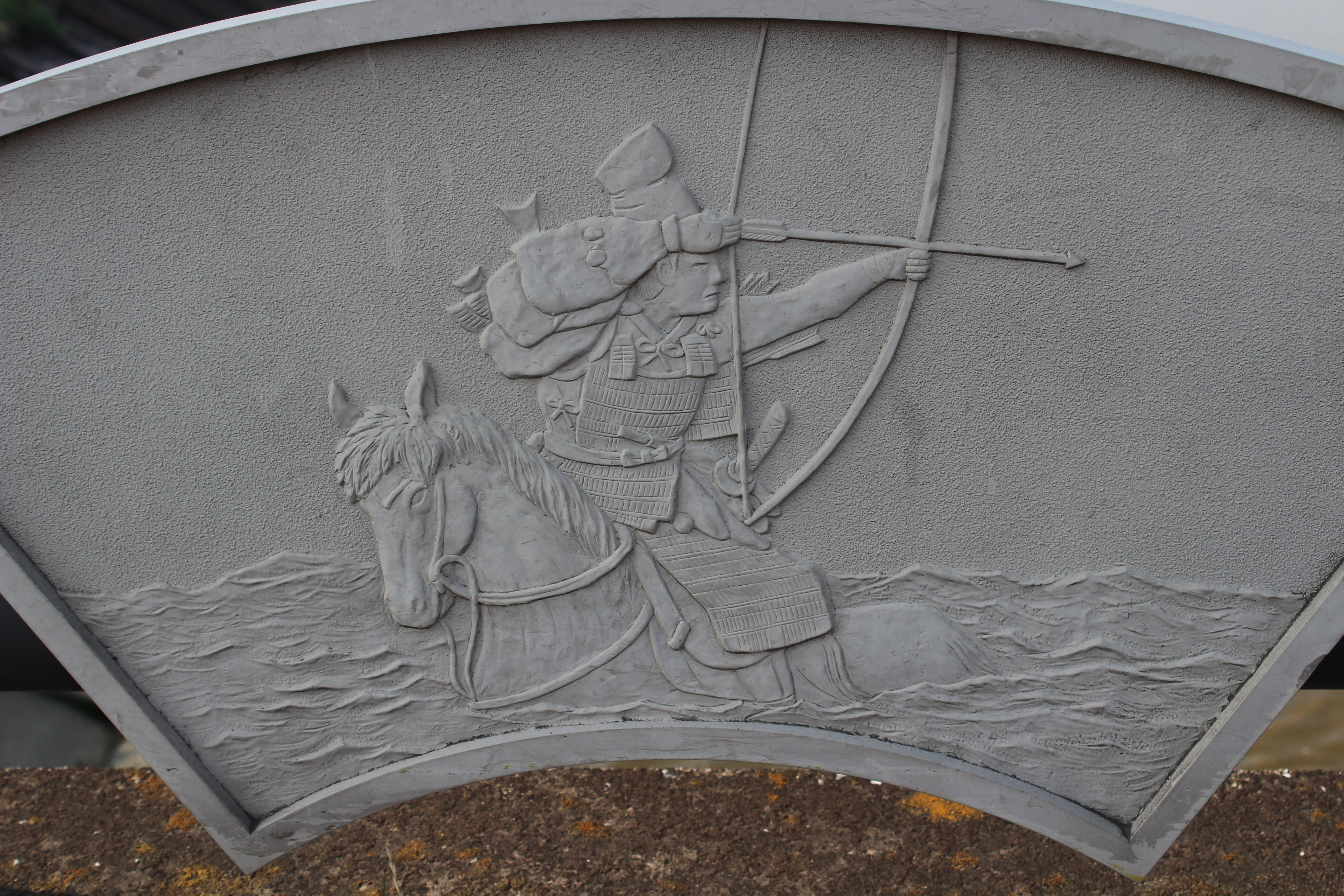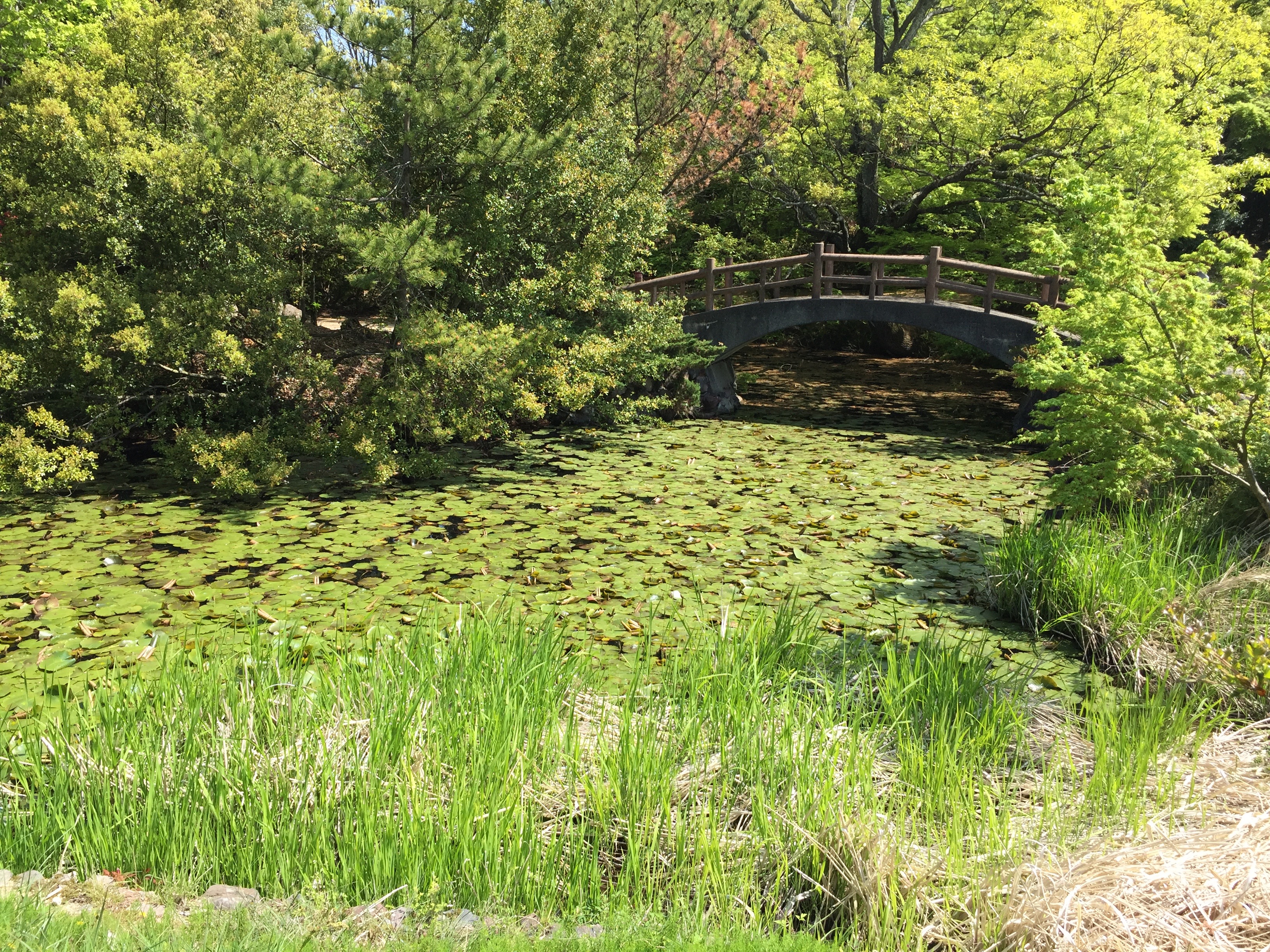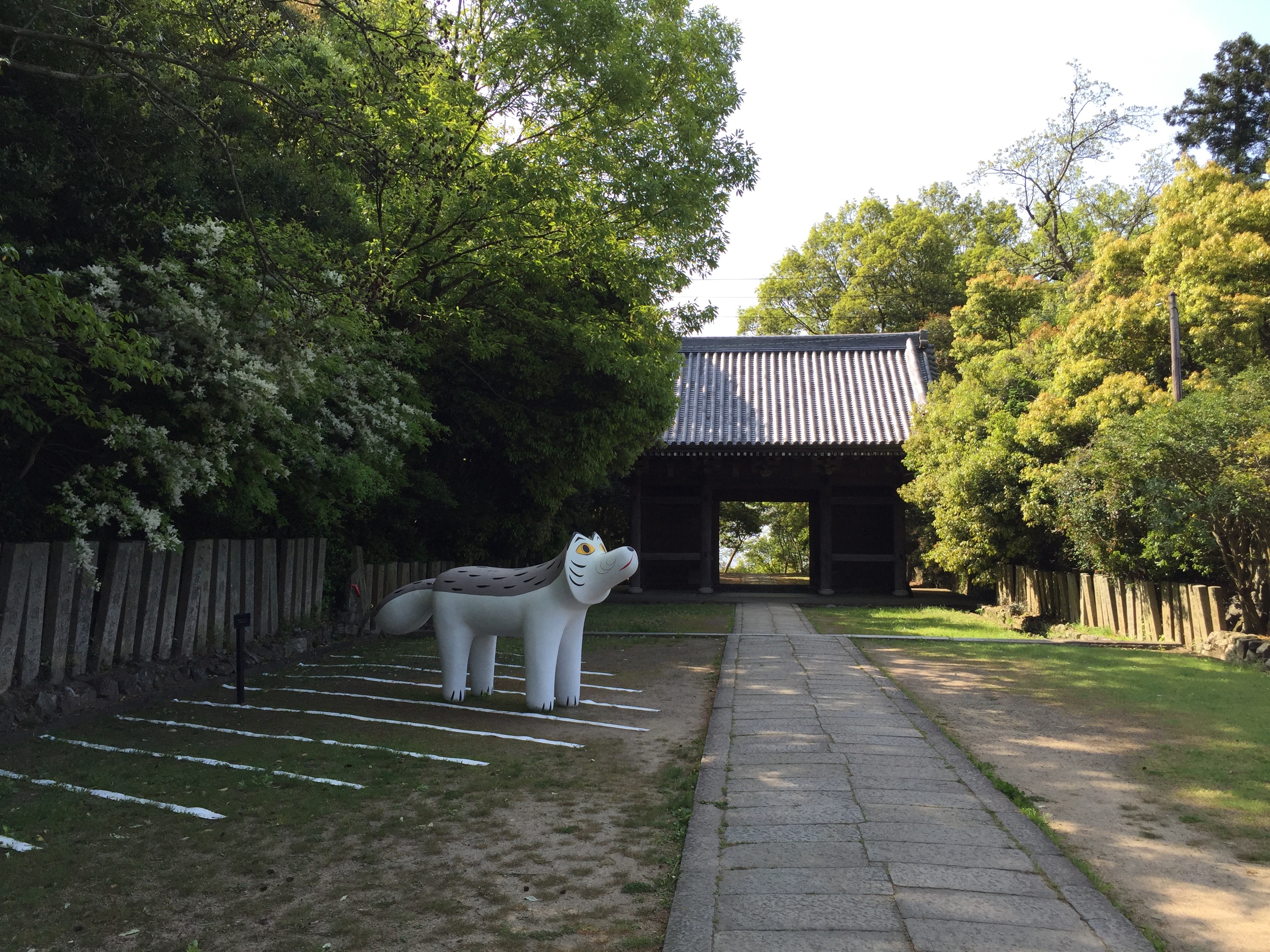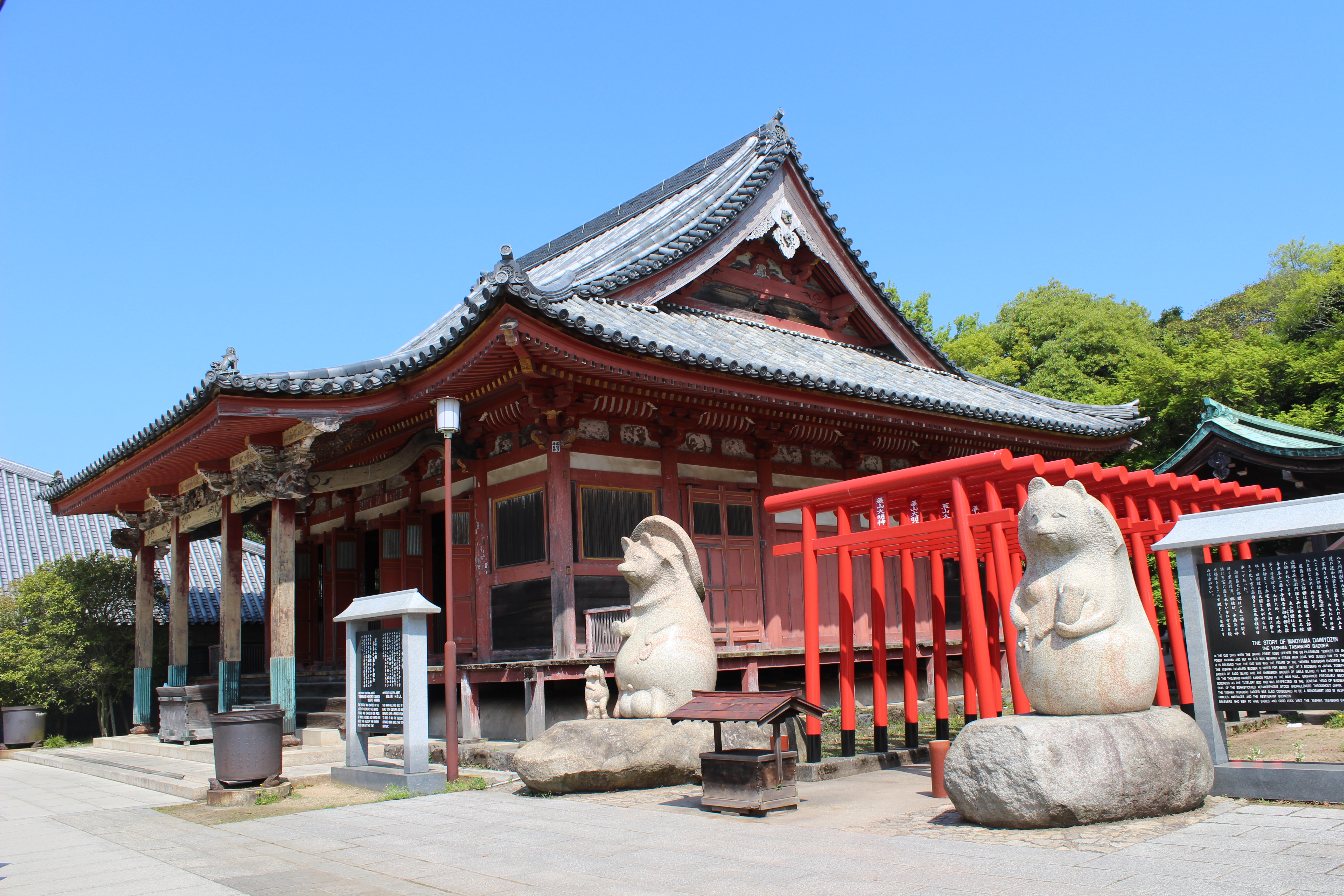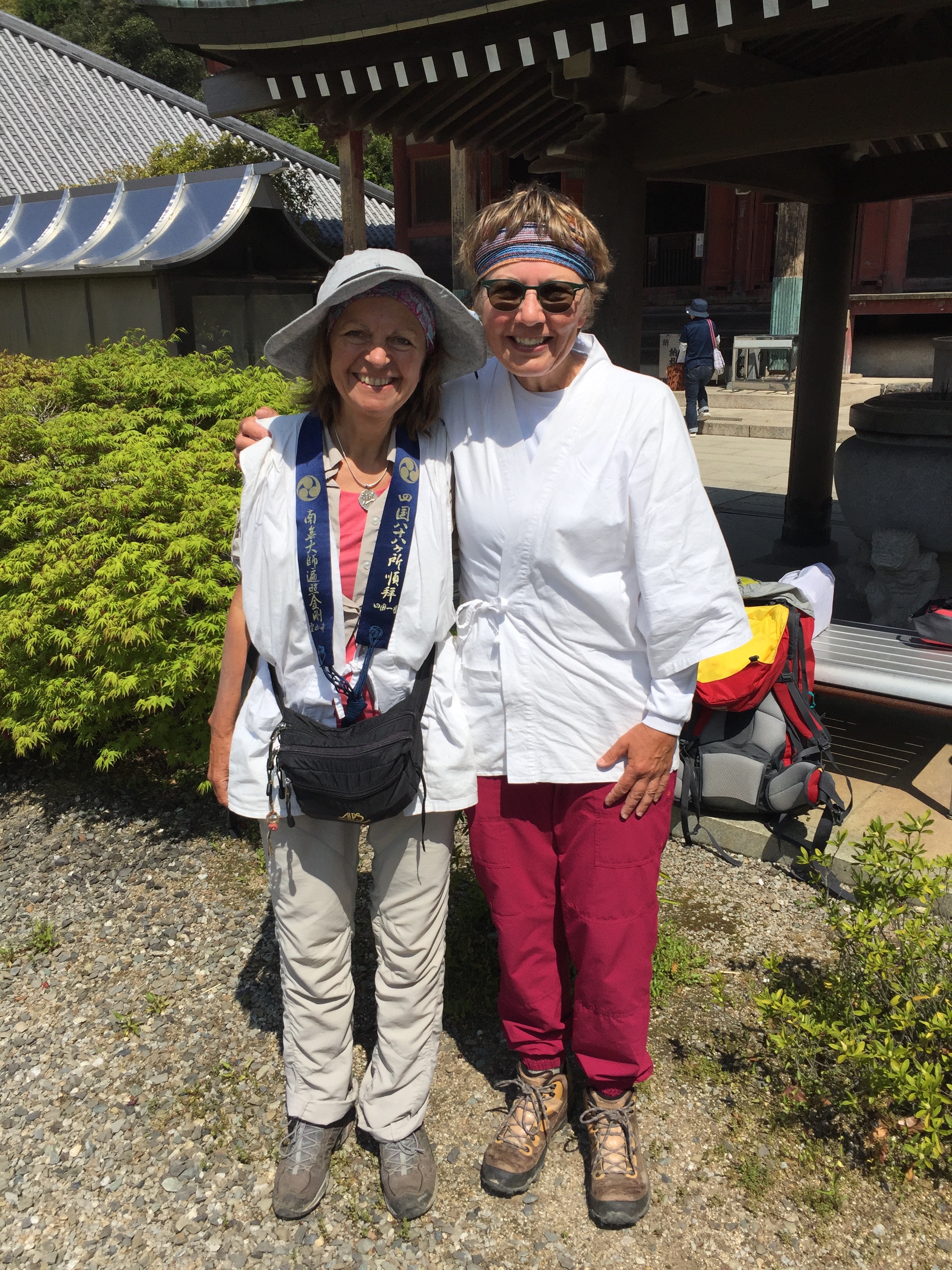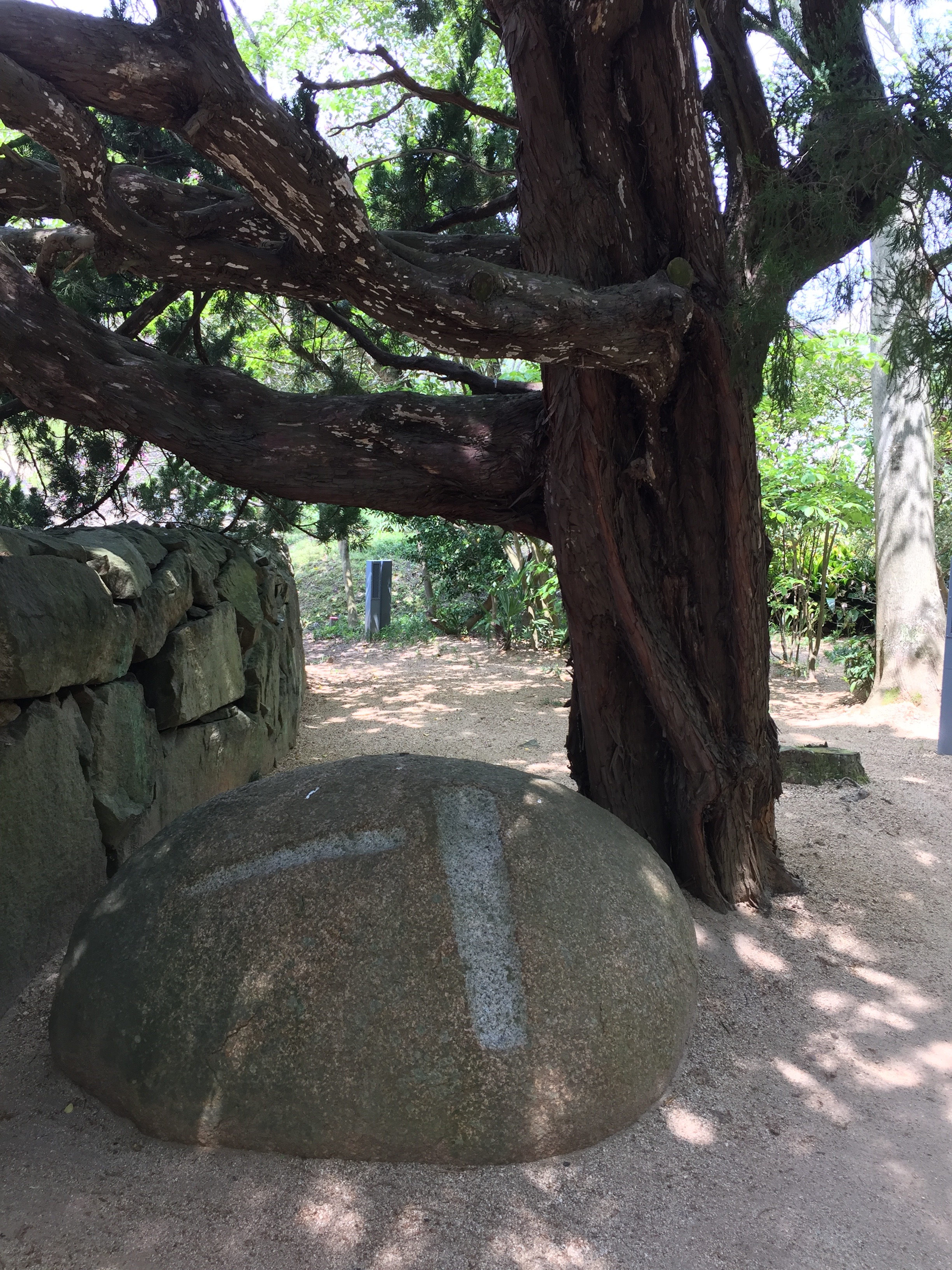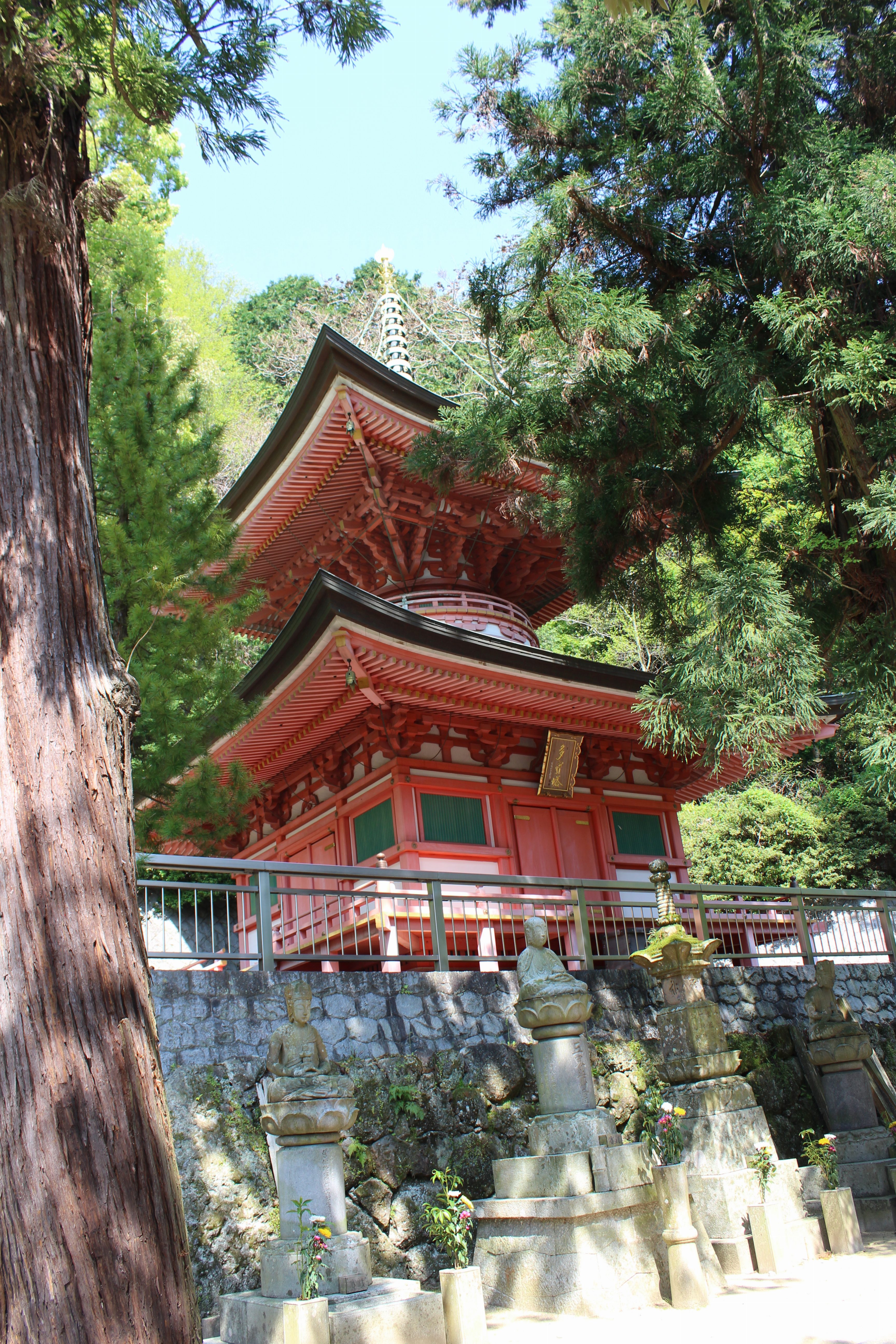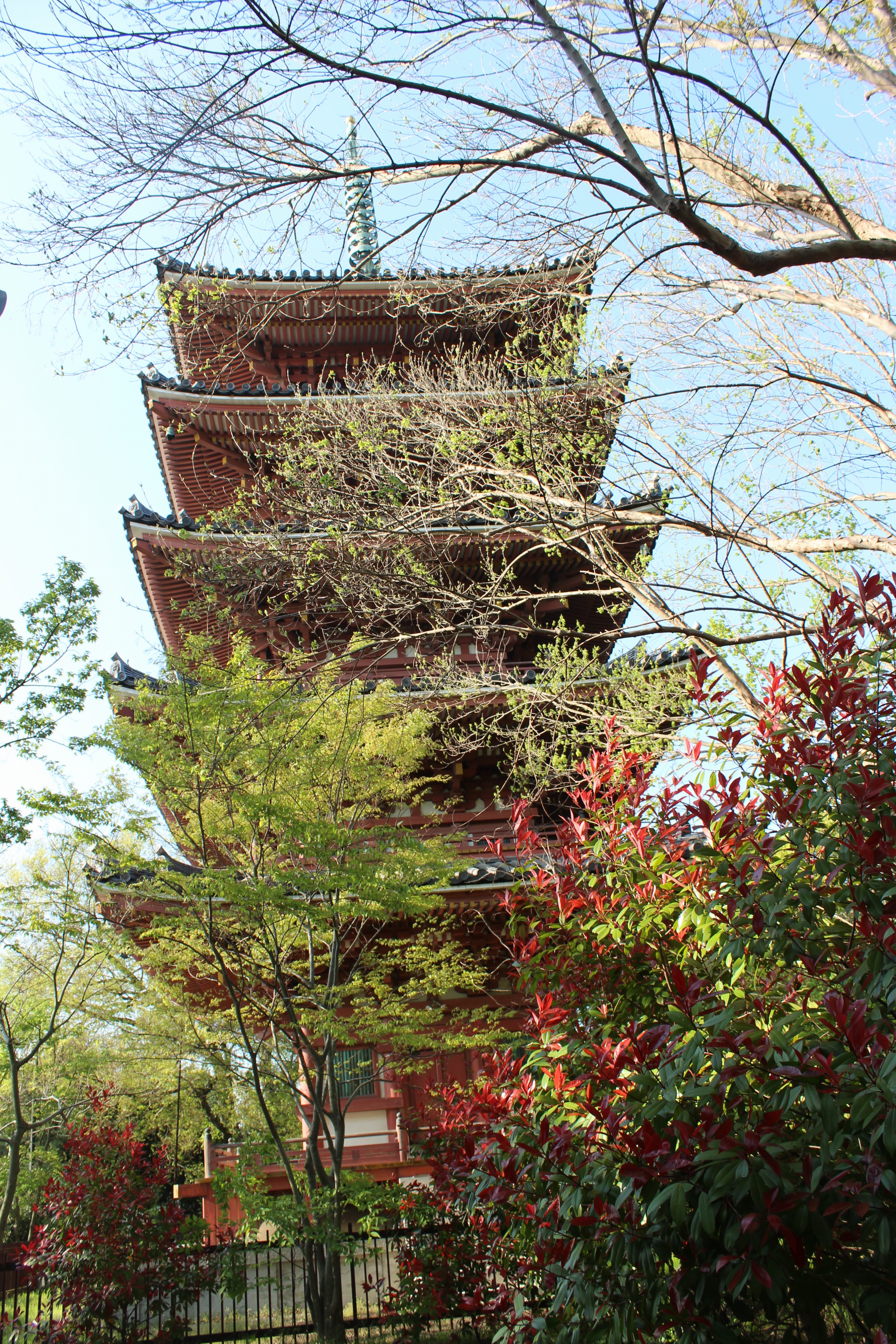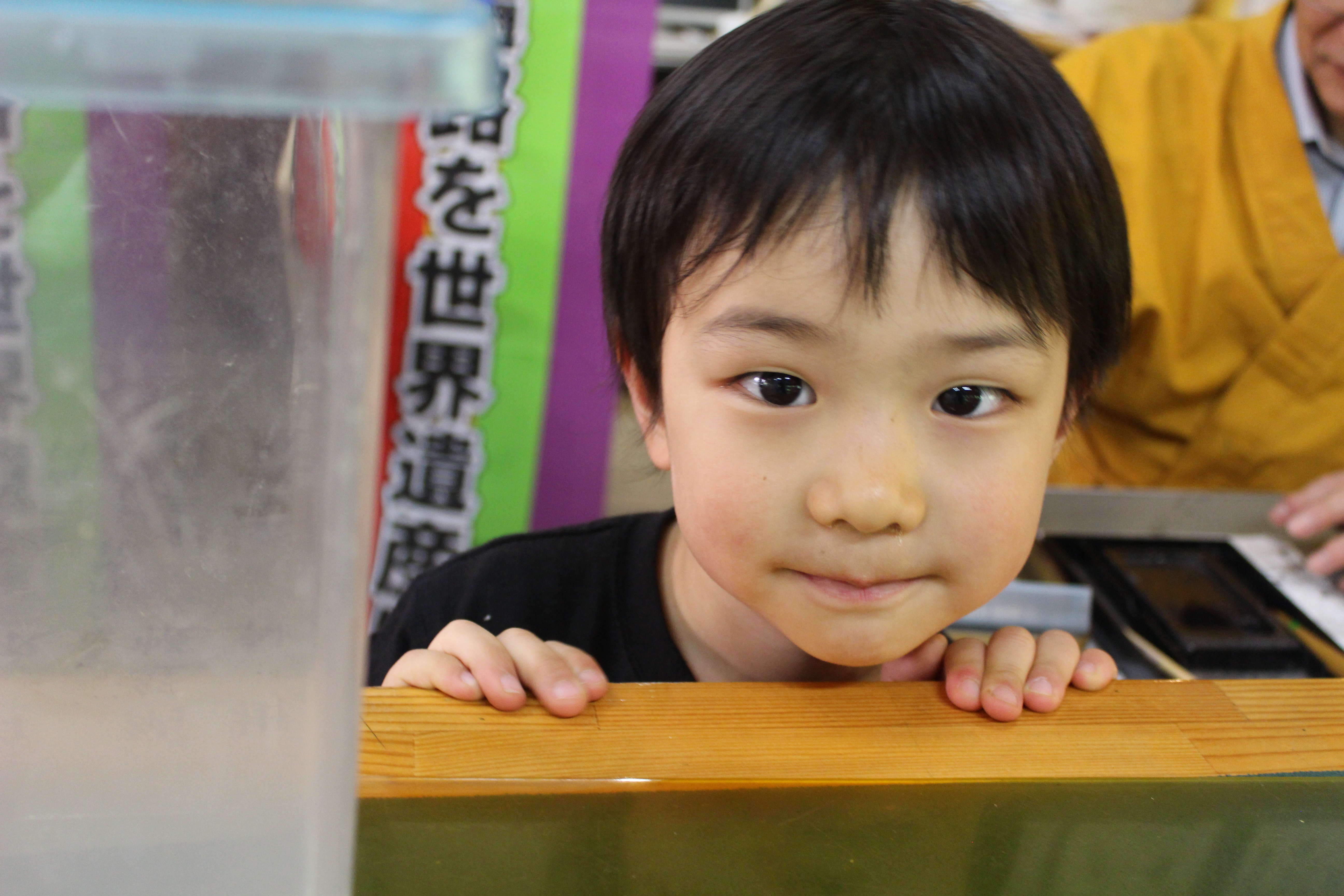A Sense of Time (temples 85 and 86)
When walking out of Takamatsu City, one of the reliefs on a bridge showed an
ancient warrior fighting on a horse, telling the story of the defeat of the Taira clan
in a naval battle in 1185. I was surprised that in Japan, the memory of battles is still
alive after nearly 1000 years.
The scene above depicts the famous samurai Nasuno Yoichi (1169 – 1232) in the
battle of Yashima (1185, when Heishi, Taira clan, was defeated and Genji, Minamoto
clan, established Kamakura Shogunate). He became particularly famous for one
action: Sitting on a horse in the wavy waters, he aimed at a fan atop a pole on a ship.
(It was placed there by the Taira clan to challenge the Minamoto clan, the enemy).
With a single shot, he hit the target. Later on, Nasu became a Buddhist monk and
founded a temple. For hundreds of years, this temple was handed down to the
next generation, until the temple was destroyed during World War II.
Legend says that the pond at Yashimaji turned red after the warriors, who fought at
this battle, washed their swords in this pond. Relics of the battle can be seen in the
Treasure house of Yashimaji.
Rurihō-no ike, Pond of Emerald Jem or Pond of Blood in Yashimaji
Shishi-odoshi (scaredeer), an art object by the artist Jin Hasegawa, was exhibited
after the entrance gate of Yashimaji. It looked a bit lost and scared itself.
The temple grounds also show two large, stone images of Minoyama Daimyojin, a
tanuki (raccoon dog) that is able to change shape and assume other forms. Legend
says that a tanuki changed into the form of an old man meeting Kōbō Daishi.
Tanuki are also said to have taken part in the Sino-Japanese war (1894-1895).
The main hall nearby is a 15th century construction and a cultural Treasure.
In Yashimaji, I also met Marylin, a Canadian woman who did the whole pilgrimage
by camping and sleeping in the rest huts provided for the Ohenros. We immediately
bonded. It would have been great having met her earlier on the trek.
On the way to Yakuriji (temple 85), I visited the Isamu Noguchi museum. Noguchi
was an American/Japanese artist. In a book called “The voice of Isamu Noguchi”,
he stated that Japan needs to teach the world a sense of time, a time which goes in
all directions.
Changes in a garden’s trees and rocks take place with the flow of time, he says. They
change as humans change. The purpose of a sculpture is to teach human beings
nature. I love his philosophy.
Yakuriji nestled against powerful cliffs
Two story pagoda in Yakuriji
It was already late in the afternoon when I arrived at Shidoji (temple 86).
Untrimmed trees and shrubs and many flowers were surrounding the temple halls
where the little son of the priest was chasing butterflies. I immediately felt connected.
Five story Pagoda at Shidoji
Alert and with big eyes, the son of the priest was looking at me.

